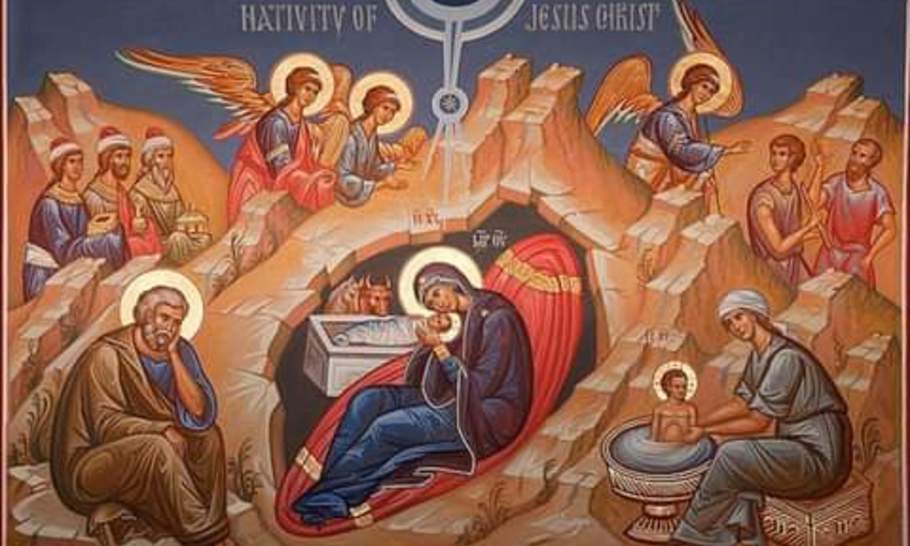Whatever happened to Christmas?

Just a few years ago you could easily buy charity Christmas cards showing great works of Christian art depicting the Nativity, usually from the Middle Ages or the Renaissance. It seems almost impossible now unless you go to museum shops such as the V&A or the Bodleian Library. Now even charity shops mainly sell cards with images of snow, Santa, reindeer, or Christmas trees. Jesus Christ has apparently vanished without trace.
The same is true on TV during the Christmas period. On BBC1 the only programmes acknowledging that Christmas has anything to do with Christianity are all on Christmas Eve: Midnight Mass from Blackburn Cathedral (BBC1, 11.45-1), Carols from King’s (BBC2, 6.55-8.30), Royal Carols: Together at Christmas (ITV1, 7-8.05), Christmas Carols from St. Elisabeth’s Church in Stockport (ITV1, 11.40-12.45) and On Christmas Night (dancer Oti Mabuse reads from St. Luke’s Gospel, Christmas Day, BBC1, 11.15-11.20). Three of these are safely buried away towards or after midnight. Peak time is a mix of tributes, “family films”, Christmas “Specials”, ballets, terrible comedies and quizzes.
None of this should surprise us. At the end of November the Office for National Statistics released the 2021 Census data on ethnicity, religion, national identity and language. The Christian population of England and Wales, it reported, has dropped below 50%. For the first time the majority are of other faiths or none, with London the most religiously diverse area of the country. This marks an extraordinary fall of 13 percentage points – from 59% in 2011 to 46% in 2021. This decrease isn’t new. It continues a trend that started to grow in the 1950s. This doesn’t mean that religion as such is in decline. The number of Muslims has increased significantly, from 2.7m (4.9%) in 2011 to nearly four million (6.5%) in 2021. The percentage of respondents saying they are Jewish is fairly stable, but absolute numbers and percentages of Hindus, Sikhs, Buddhists and those selecting “other religion” have increased. The largest increase has been in the “nones” — those who profess no religion at all — who now number 37.2%, compared to 25.2% in 2011.
This isn’t just about Christianity in Britain. It is also about historical and cultural continuity. Teachers of the history of art and English Literature often point out that schoolchildren and university students are ever more often religiously ignorant and illiterate: they can’t identify Christian imagery in art or in literature. A panel discussion at a national symposium on religious literacy in Washington DC a few years ago quoted from a survey which showed that on average, only about half of those surveyed knew basic facts about the Bible, world religions and religion in civic life. Examples included such facts as that the “Golden Rule” is not one of the Ten Commandments, that Martin Luther inspired the Protestant Reformation and that the four Gospels are Matthew, Mark, Luke and John.
When I was at primary school we attended daily prayers, the Headmaster read at lunch from an enormous old Bible and in the run up to Christmas, carols were sung almost every day. In White Heat, his history of Britain in the 1960s, Dominic Sandbrook writes (p 464), “Opinion polls in the mid-1950s suggested that at least seven out of ten people believed in God; an estimated one in four people went regularly to church, with perhaps half that number going every week; and half of all families sent their children to Sunday school… What was more, for a short time, Anglicanism was culturally respectable again, its appeal bolstered by the intellectual credibility of prominent worshippers like C.S. Lewis, John Betjeman and Dorothy L. Sayers.”
The decline of Christian faith in Britain and the growing loss of connection with the country’s Christian past have reached a watershed in our history. This isn’t just about Christmas cards or the absence of Christian programmes over Christmas, or indeed throughout the years. This is a key moment in British culture, as our churches grow empty, many of our children and grandchildren puzzle over references to a bygone faith, and our bishops fail to take a stand over the persecution of Christians over large parts of Africa and the Middle East. This is a significant turning-point in our culture.
A Message from TheArticle
We are the only publication that’s committed to covering every angle. We have an important contribution to make, one that’s needed now more than ever, and we need your help to continue publishing throughout these hard economic times. So please, make a donation.





